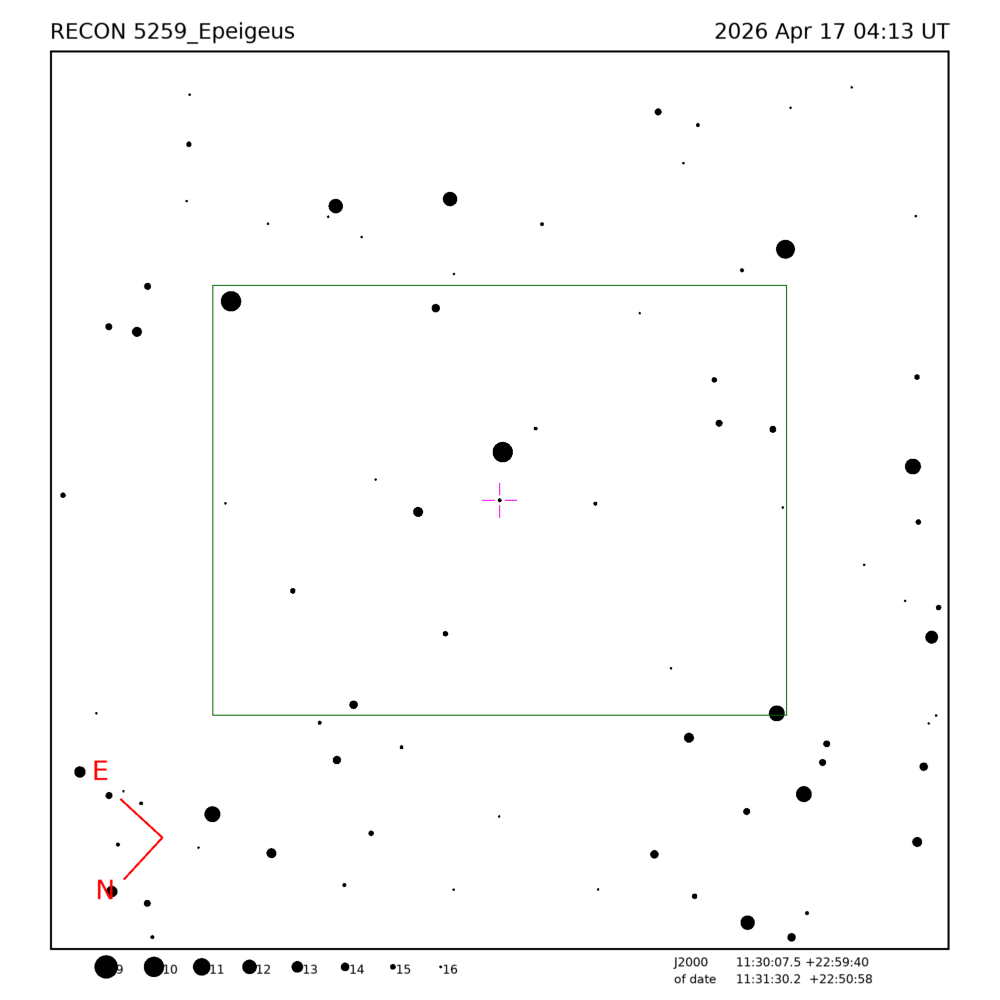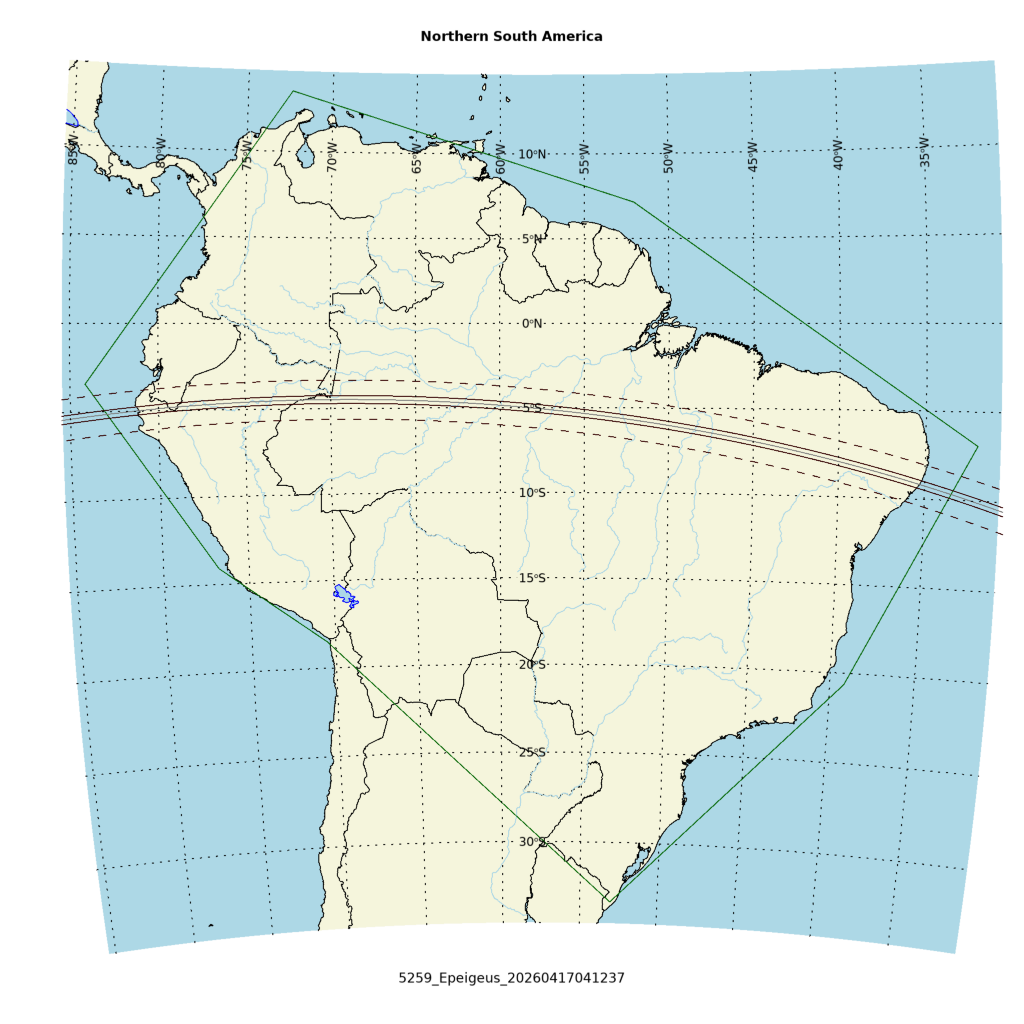
Occultation event with (5259) Epeigeus, event index number 3646
Regions able to see the event: SAmericaN
Geocentric closest approach at 2026/04/17 04:12:37 UTC
J2000 position of star is 11:30:07.5 +22:59:40
Equinox of date position of star is 11:31:30.2 +22:50:58
Star is 136 degrees from the moon. Moon is 0% illuminated.
Stellar brightness G=15.2, apparent brightess of occulting body is G=15.6
Use an exposure time of 0.95 seconds with the standard RECON-QHY system.
SNR of 8.7 per integration for unocculted signal
Expected flux drop is 60% with SNR of 5.2 for the occulted depth (per occulted point)
Apparent velocity is 11.3 km/sec on the sky relative to the star, or, 12.5 arcsec/hr.
Position angle of asteroid motion is 79.7 degrees
The recommended exposure time corresponds to 10.8 km per image.
The 1-sigma error in the time of the event is 0.7 seconds.
The 1-sigma cross-track error in the shadow position is 29.4 km.
The sky-plane scale is 3251.2 km/arcsec.
Diameter estimates:
50.6 km assuming a 5% albedo, maximum of 4.5 sec for a central chord
20.6 km assuming a 30% albedo, maximum of 1.8 sec for a central chord
Cross-track diameter of 44.7 km used for deployment plan.
Star training set for 5259_Epeigeus, (2026/04/17 04:13UT) Object RA Dec mag sep mel Regulus 10:09:46.2 +11:50:16 1.3 22.36 127 68Del Leo 11:15:30.2 +20:22:45 2.6 4.46 135 92 Leo 11:42:08.9 +21:12:23 5.3 2.96 139 PPM 101224 11:32:43.8 +22:40:20 7.8 0.33 136 5259_Epeigeus 11:31:30.2 +22:50:58 15.6 136 Positions are for equinox of date


Star training set for 5259_Epeigeus, (2026/04/17 04:13UT) Object RA Dec mag sep mel Regulus 10:08:21.9 +11:58:02 1.3 22.36 127 68Del Leo 11:14:06.8 +20:31:22 2.6 4.46 135 92 Leo 11:40:46.9 +21:21:08 5.3 2.96 139 PPM 101224 11:31:21.2 +22:49:03 7.8 0.33 136 5259_Epeigeus 11:30:07.5 +22:59:40 15.6 136 Positions are for J2000